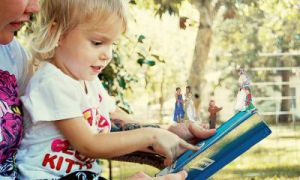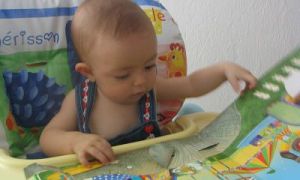Supporting a toddler with challenging behavior requires a combination of strategies and resources tailored to their developmental stage. The following article provides information on Strategies To Support Toddlers With Challenging Behaviour, Positive Reinforcement For Toddlers, Teaching Emotional Regulations To Toddlers and more.
Strategies To Support Toddlers With Challenging Behaviour
-
Positive Reinforcement: Focus on rewarding positive behavior rather than punishing negative behavior. Praise and reward the child when they display appropriate behavior.
-
Consistent Routines: Establish clear and consistent routines to provide a sense of security and predictability. This can help reduce anxiety and challenging behaviors.
-
Clear Expectations: Set clear and simple expectations for behavior. Use visual aids, such as picture charts, to help the child understand what is expected of them.
-
Calm and Patient Approach: Respond to challenging behavior with a calm and patient demeanor. Avoid yelling or showing frustration, as this can escalate the behavior.
-
Redirection: Redirect the child's attention to a different activity when they exhibit challenging behavior. Offer alternative activities that are engaging and appropriate.
-
Time-In: Instead of using time-outs, use time-ins where the child can calm down in a safe and comforting space with a trusted adult.
-
Teach Emotional Regulation: Help the child learn to identify and express their emotions in a healthy way. Use tools like emotion charts and role-playing to teach emotional regulation skills.
-
Engage in Physical Activities: Provide opportunities for physical activities to help the child release energy and reduce frustration. Activities like outdoor play, dancing, and sensory play can be beneficial.
Positive Reinforcement For Toddlers
-
Praise and Encouragement: Offer specific praise for good behavior. Instead of just saying "Good job," try "I love how you shared your toys with your friend!"
-
Rewards: Use small rewards to reinforce positive behavior. This could be stickers, extra playtime, or a favorite snack.
-
Consistency: Be consistent with your reinforcement. Make sure to acknowledge positive behavior every time it occurs.
-
Visual Charts: Create a reward chart where toddlers can see their progress. For example, they can earn a sticker for each positive behavior, and after a certain number of stickers, they get a reward.
-
Positive Attention: Give your child positive attention when they are behaving well. This can be as simple as a smile, a hug, or spending quality time together.
-
Modeling Behavior: Demonstrate the behavior you want to see. Toddlers learn a lot by watching adults, so show them how to act through your own actions.
-
Immediate Feedback: Provide immediate feedback to reinforce the connection between the behavior and the reward. This helps toddlers understand what behavior is being rewarded.
-
Celebrate Successes: Celebrate small successes and milestones. This helps build confidence and encourages continued positive behavior.
Teaching Emotional Regulation To Toddlers
-
Model Calm Behavior: Demonstrate calm and controlled behavior in stressful situations. Toddlers learn by observing adults, so showing them how to manage emotions is key.
-
Label Emotions: Help toddlers identify and label their emotions. Use simple language to describe feelings, such as "happy," "sad," "angry," or "scared."
-
Use Stories and Books: Read books and tell stories that focus on emotions and how characters manage them. This can help toddlers understand and relate to different feelings.
-
Teach Deep Breathing: Introduce deep breathing exercises to help toddlers calm down. Encourage them to take slow, deep breaths when they feel upset.
-
Create a Calm Down Space: Designate a quiet, cozy area where toddlers can go to calm down. Fill it with comforting items like soft toys, pillows, and books.
-
Encourage Expression: Allow toddlers to express their emotions through words, drawings, or play. This helps them process and understand their feelings.
-
Use Visual Aids: Use emotion charts or faces to help toddlers recognize and communicate their emotions. Visual aids can be very effective in teaching emotional regulation.
-
Practice Problem-Solving: Teach toddlers simple problem-solving skills to handle conflicts and frustrations. Role-playing different scenarios can be helpful.
-
Positive Reinforcement: Praise and reward toddlers when they use appropriate emotional regulation strategies. Positive reinforcement encourages them to continue using these skills.
Stories That Teach Children About Behaviour
1. The Lion and the Mouse
Once upon a time, a mighty lion was sleeping in the forest when a little mouse accidentally ran across his nose and woke him up. The lion was about to eat the mouse when the mouse begged for mercy, promising to help the lion one day. The lion laughed but let the mouse go. Later, the lion was caught in a hunter's net. The mouse heard his roar and came to help, gnawing through the ropes to free the lion. The lion realized that even small creatures can be helpful and that kindness is always rewarded.
2. The Boy Who Cried Wolf
A shepherd boy, bored while watching his flock, decided to play a trick on the villagers by shouting, "Wolf! Wolf!" The villagers came running to help, only to find there was no wolf. The boy laughed at their expense. He repeated the trick several times. One day, a real wolf appeared, and when the boy cried for help, the villagers thought it was another false alarm and didn't come. The wolf scattered the flock, and the boy learned the importance of honesty.
3. The Tortoise and the Hare
The hare was always boasting about how fast he could run. Tired of hearing him brag, the tortoise challenged him to a race. The hare, confident of winning, took a nap midway through the race. The tortoise, slow but steady, kept going and eventually won the race. The hare learned that arrogance and overconfidence can lead to failure, while perseverance and determination lead to success.
4. The Rainbow Fish
The Rainbow Fish was the most beautiful fish in the ocean, but he was also very proud and refused to share his shiny scales with others. As a result, he was lonely. One day, a wise octopus told him that he would be happier if he shared his beauty with others. The Rainbow Fish decided to give away his scales, one by one, and found that sharing made him happy and brought him many friends.
5. The Giving Tree
A tree loved a little boy and gave him everything he needed. As the boy grew older, he took more and more from the tree until there was nothing left but a stump. The boy, now an old man, returned to the tree, and the tree offered him a place to rest. The story teaches about selflessness, generosity, and the joy of giving.
These stories can be used to teach children important lessons about kindness, honesty, perseverance, sharing, and generosity. They provide valuable opportunities for discussion and reflection on behavior and its consequences.
Further Reading
Descriptive Words For Children's Behaviour
Strategies to Promote Positive Behaviour In OOSH Services
Stages Of Behaviour
Behaviour Management In Childcare
Redirecting Children's Behaviour
Supporting Children With Challenging Behaviour
Behaviour Management Plans In Childcare
Aggressive Behaviour And Violence In Children
Talking To Parents About Their Child's Behaviour Issues
Understanding Temperament In Children






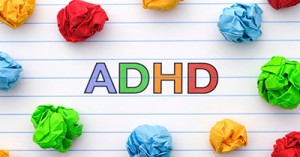
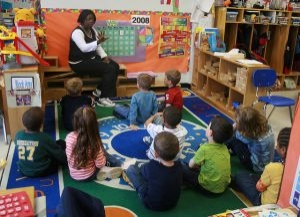 Working as a childcare professional can be a challenge especially when dealing with behavioural problems which may arise. The techniques we use when dealing with
Working as a childcare professional can be a challenge especially when dealing with behavioural problems which may arise. The techniques we use when dealing with There are different types of behaviour that children can display and sometimes it can be hard to manage, especially if a child is having behavioural
There are different types of behaviour that children can display and sometimes it can be hard to manage, especially if a child is having behavioural As a parent, your behavioural expectations of your child can be higher than what is actually developmentally appropriate for your child's age.
As a parent, your behavioural expectations of your child can be higher than what is actually developmentally appropriate for your child's age.
 As Educators, there will be many instances where you will need to write about a child's behaviour. For a behaviour management plan, assessments, half-yearly or
As Educators, there will be many instances where you will need to write about a child's behaviour. For a behaviour management plan, assessments, half-yearly or As Educators when communicating with Parents (through verbal or non-verbal communication), there will be times where we need to discuss issues or concerns that may
As Educators when communicating with Parents (through verbal or non-verbal communication), there will be times where we need to discuss issues or concerns that may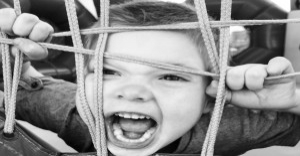 Challenging Behaviour is when a child does something that hurts themselves and/or other people.
Challenging Behaviour is when a child does something that hurts themselves and/or other people.
 As part of your child's development it is normal for your child to have anxiety and fears. A baby commonly shows a fearful sign to
As part of your child's development it is normal for your child to have anxiety and fears. A baby commonly shows a fearful sign to It's always difficult to bring up behavioural issues with parents, it can be nerve wrecking to tell a parent that their child misbehaves but that
It's always difficult to bring up behavioural issues with parents, it can be nerve wrecking to tell a parent that their child misbehaves but that All children deal with anger on a daily basis. Thinking about it as a child, there is a lot to be angry about. Elder people
All children deal with anger on a daily basis. Thinking about it as a child, there is a lot to be angry about. Elder people It is important to understand that your child behaviour problems could not just be from attention seeking. There are many factors to take into consideration
It is important to understand that your child behaviour problems could not just be from attention seeking. There are many factors to take into consideration
